Contents:
- Chlorine and water
- Chlorination of the basin
- Daily disinfection of well water
- Single clearing of the well
- Disinfection of cells and premises for animals and birds
- Disinfection of toilets
- Precautions
Chlorine is a long-used disinfectant. It is used to treat various surfaces, to clean the well and pool, to disinfect the ancillary rooms and animal cells, wash the toilets. The effectiveness of this tool depends on how correctly it is used.
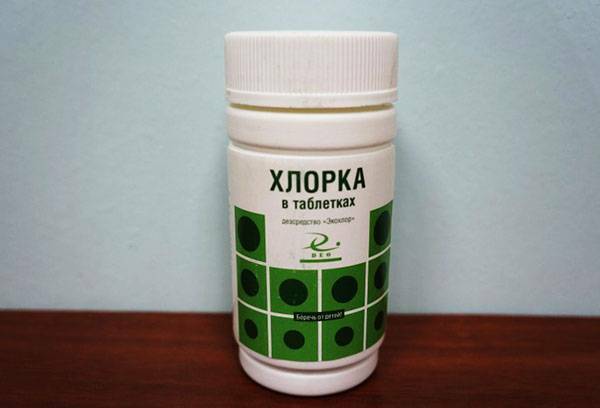
Chlorine and water
The bactericidal properties of chlorine for water purification have so far not been able to surpass any single drug. Chlorination is still the main and most effective means for cleaning. In urban water utilities, other methods are used, but they are only a supplement to chlorination and can not produce the desired effect on their own. Water in the pools is also cleaned with chlorine, the same tool is also used for the well. All water filters during cleaning are also recommended to be lowered into the chlorine solution.
For the disinfection of water in swimming pools, wells and water pipes, chlorine can be used in the form of sodium hypochlorite or calcium hypochlorite. Both gaseous chlorine and a solution of bleach are used. For the treatment of pipelines and filters, a solution of sodium hypochlorite or calcium hypochlorite, as well as chloramine, is used.
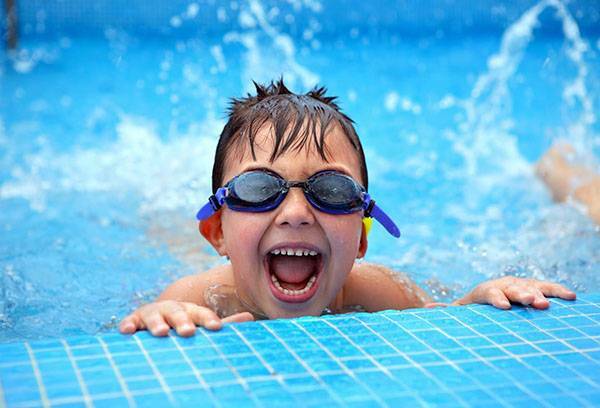
Chlorination of the pool
Owners of home pools rarely resort to the addition of chlorine-based reagents. This is due to the fact that, if used improperly, a specific unpleasant odor is spread, and when water gets into the mucous membranes, irritation occurs. Such negative effects arise from ignorance of dosage, incorrect selection of the reagent or its application without taking into account the acidity / alkalinity of the aquatic environment.
What you need to know to ensure that disinfection is effective?
- The pH of the water should be between 7.2-7.6.If this parameter is not observed, chlorine dissolves poorly and evaporation occurs. It is he who gives the smell of bleach.
- The temperature should be taken into account when adding the reagent. The higher it is, the less chlorine will dissolve in the water. For example, at a temperature of 0 ° C, this figure is 14.8 g / liter, and at 40 ° C - only 4.6 g / liter, that is, three times less.
- After the use of chlorine-based reagents, a minimum of 20 hours must elapse. During this time, full reaction will take place in the water and it will become clean and safe.
It is not possible to specify the exact dosage of the reagent, since different manufacturers produce products of different concentrations. Therefore, you need to follow the instructions for use: it is always attached. At home, you can use "Belize".This solution of sodium hypochlorite, in liter contains active chlorine at a level of 80-85 g / dm3.In the pool, you can add 1 liter of "Whiteness" for every 10 cubic meters of water.
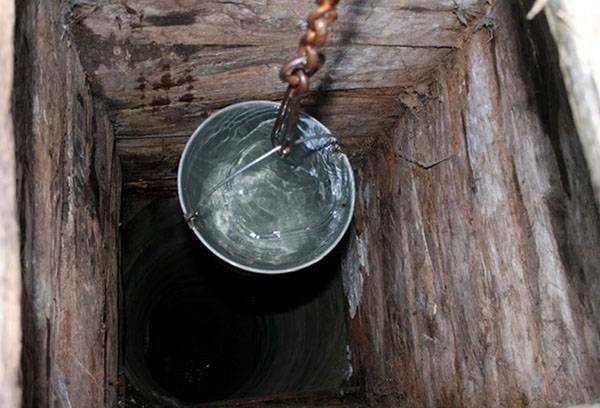
Daily disinfection of well water
There are two ways of disinfecting the well with chlorine - constant chlorination and one-time disinfection. The first method is used when there is a danger of water through intestinal or other infections. Usually this is a seasonal phenomenon, and it is associated with a change in the level of groundwater. At this time disinfection must be performed daily.
It is very important not to make a mistake with the dosage. In the well, 1% solution of bleach is added in the amount of 600-800 ml, if the volume of the well is 1500 liters. Pure chlorine is more concentrated, it is more difficult to dose, so it is not used for the well.
Advice
It is very convenient for permanent disinfection to use chlorine capsules. They are lowered to a depth of half a meter from the bottom and are changed or recharged after a month.
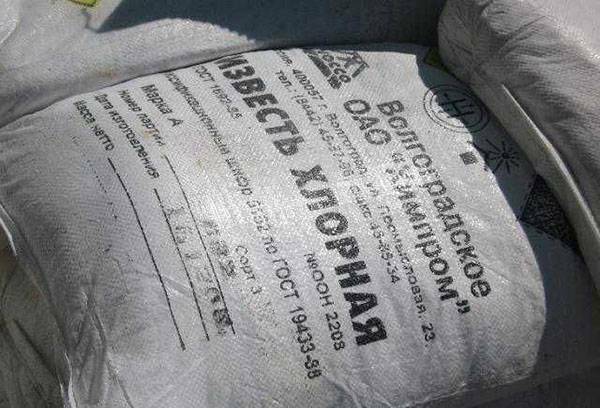
Single cleaning of a well
Before adding chlorine, the water from the well is scooped out or pumped out with a pump. Then the surface of the rings is cleaned mechanically and washed with bleach( 25-30 ml of bleach per 1 liter of liquid).Next, a chlorine solution is prepared for subsequent disinfection.
For this you need to calculate the amount of water. The standard concrete ring( 1 × 0.9 m) is 700 liters( 0.7 m3) of water. In this case, it is sufficient to calculate the number of rings covered with water. In other cases, you need to measure the depth of the sixth, as well as the section of the well. Multiplying these figures, you can get the volume of water. For each cubic meter, take 1 kg of bleach. It needs to be grinded in a small amount of water and allowed to settle.
When the well is refilled, the clarified solution is poured into water and stirred with a bucket or a sixth for 15 minutes, after which the lid is closed.8 hours of water from this well can not be taken, but after this time it is again pumped to the complete disappearance of the smell and taste of chlorine.
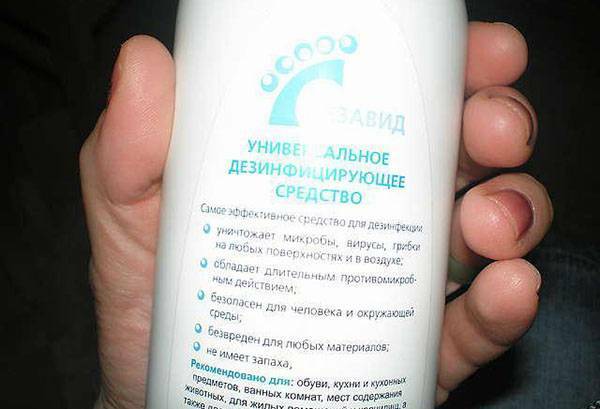
Disinfection of cells and premises for animals and birds
Animal cells can be disinfected with chlorine-containing drugs only in their absence. For example, after slaughtering a group of animals / birds and before settling in new ones or if there is a possibility of resettlement in other cages. The frequency of processing premises for animals or chicken coop - 1-2 times a year.
In the hen house, after cleaning the litter and cleaning the surface, sprinkle the floor with bleach and prepare a solution - 200 ml of "whiteness" for 5 liters of water. They handle all the surfaces in the chicken coop - walls, lattices, roosts. For rabbit cages use a stronger concentration - 400 ml per 5 liters of water. But after 8-12 hours the treated surfaces are washed. For premises where animals live permanently, chlorine is not recommended.
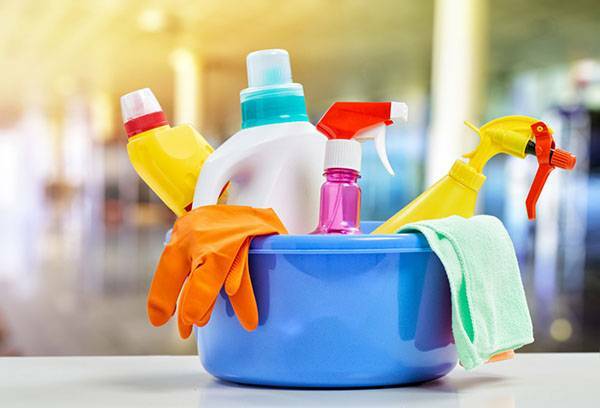
Disinfection of toilets
Chlorine is indispensable for the disinfection of toilets. It is used both in apartments and in "houses" - street toilets. The apartments rarely use chlorine lime or "Belize".After all, now available chlorine-containing household chemicals for the premises, which will not smite its aroma and effectively cope with bacteria. As an example, you can bring "Domestos", tablets "Deo-chlorine."How to use a particular brand, manufacturers always point, so you just need to follow their recommendations.
And here for street toilets are often chosen "nuclear" preparations with a strong smell - chloric lime, chloramine, at best "Belize".Often these chemicals are chosen because of their cheapness, and sometimes because of "the more strongly the smell, the better it works".In fact, modern chlorine-based reagents do not produce such "killer" flavors, but they act no worse than traditional means.
If nevertheless the usual bleach or "whiteness" is chosen as the disinfectant, it should be diluted as follows:
- "Whiteness" - a solution of 100 ml is prepared for 1 liter of water;
- chloramine - 2 g diluted in 1 liter of water;
- bleach - 100 g of lime rub in a small amount of water and poured into the toilet hole. Dry cotton powder is poured onto the floor.
Precautions
When working with any substances containing chlorine, it is necessary to use a gauze dressing and goggles. Any concentration of this substance, hitting the lungs or eyes, can lead to poisoning and irritation of the mucous membranes.
